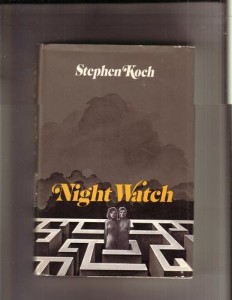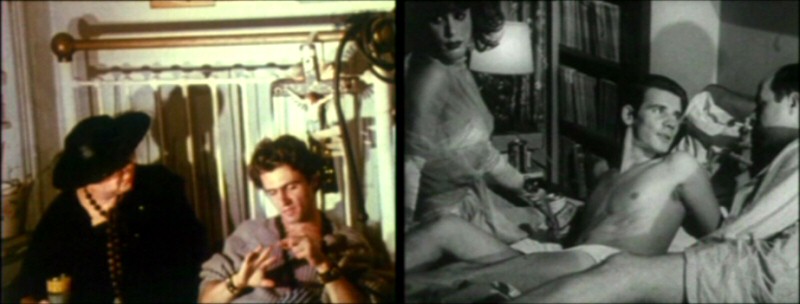From Film Quarterly (Spring 1974). I wrote this review while I was living in Paris, which made acquiring a review copy especially difficult. (I grimly recall even getting into something resembling a fistfight with the French distributor of the book, who didn’t want to give me one and blew a fuse when I insisted, even though I had an assignment.) Stephen Koch, whom I knew from my previous stint as a graduate student at the State University of New York at Stony Brook, was a friend at the time, as was Annette Michelson, who commissioned the book for Praeger. My second-hand assessment of **** (Four Stars) came from another friend, Lorenzo Mans, who saw the entire film and reviewed it for the Village Voice, though I had attended a New York screening of Blue Movie, when it went by the title Fuck. -– J.R.
STAR-GAZER:
ANDY WARHOL’S WORLD AND HIS FILMS
BY Stephen Koch. New York: Praeger. $8.95.
Books about filmmakers that do something more than regurgitate filmographies and sketch career summaries are not exactly plentiful these days, and for this reason alone Stargazer is worthy of serious attention. What it attempts is not a mere pigeon-holing of Warhol’s films but a complex assessment of his persona and its accompanying strategies — in, through and beyond these films — as they flourished in the sixties. Using the example of Marcel Duchamp’s career and Baudelaire’s definition of a dandy as crucial reference points, Koch takes us on a carefully guided tour through the entire Warhol Phenomenon with the aim of establishing how it developed, what it meant, and what kinds of importance it continues to have, filmically and otherwise.
In terms of the overall myth that Koch explores, Warhol’s near death at the hands of Valerie Solanis in 1968 is as thematically essential as films like Harlot and Vinyl. The whole career is taken up, and not only the conventional art-producing aspects of it: Warhol’s fear of being touched, his voyeurism and his preoccupation with death are interconnected, brought to the center of the stage, and analyzed at length. The psychology of narcissism is investigated as sharply here as it was depicted in Koch’s novel Night Watch, a striking attempt to humanize some of the descriptive techniques of Robbe-Grillet in a narrative informed by several overt references to film, where “star quality” (of a kind) was as much an issue as it is on this occasion.
Discussing film as film and not only film as metaphor, Stargazer offers persuasive accounts of early works like Sleep and Blow-Job, and reaches a particular plateau of excellence in the lone chapter devoted to The Chelsea Girls, where all the major concerns of the book come together in a rigorous discussion of narrative — how “The Chelsea Girls retains narrative structure while entirely dissolving narrative time” — and the shifting relations of the actors with the camera and each other.
Occasionally Koch’s high-powered rhetoric will lead him into an overly confident statement: I doubt, for example, that “[Peter] Gidal is the first commentator since John Wayne to think that the Western ‘accurately reflects the American psyche,” although it sounds amusing to say so. More debatable is the virtually total “degradation” seen in Warhot’s work “immediately after” Chelsea Girls, an opinion that must remain a postulate since Koch has not seen the 25-hour **** — a film that no longer exists and was shown only once in its entirety, but which certain spectators have claimed to be Warhol’s finest. A related difficulty crops up in the listing of Blue Movie as a Paul Morrissey work in the filmography. Apparently this is another film Koch hasn’t seen, but according to Grove Press’s post-production “script” it was produced, directed and photographed by Warhol; and it contains many interesting aspects which tend to challenge some of Koch’s generalizations about the later works. (E.g., are the “strobe cuts” any less important in effect and significance than the random zooms?)
But apart from these problems and occasional minor errors — I, a Man contains “Valerie Solanis in her single Warhol film appearance,” which ignores her presence in Bike Boy; “A.D. MacDermott” in the text becomes “Ed MacDermott” in a still caption, “John MacDcrmott” in the filmography — Stargazer is a compelling and absorbing work, serious and provocative about its subject and rich with insights into the Warholian oeuvre. –- JONATHAN ROSENBAUM





